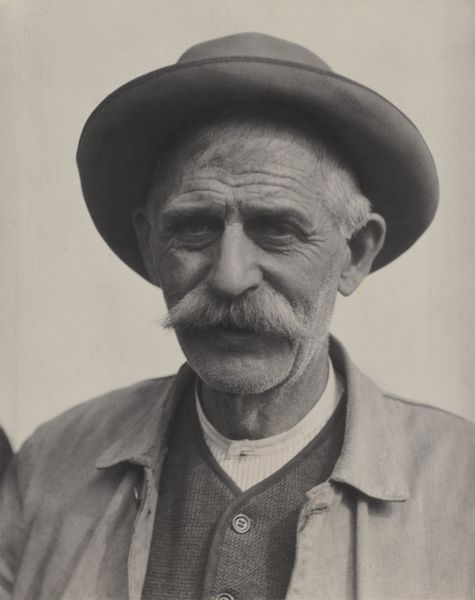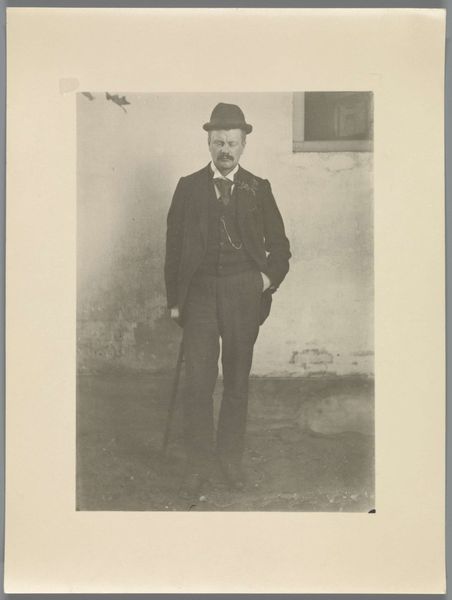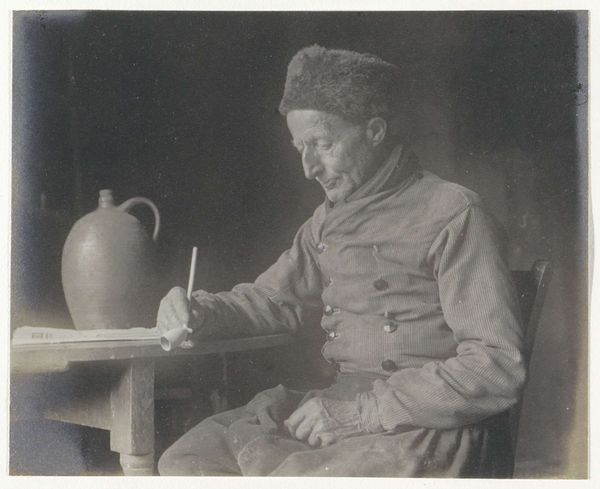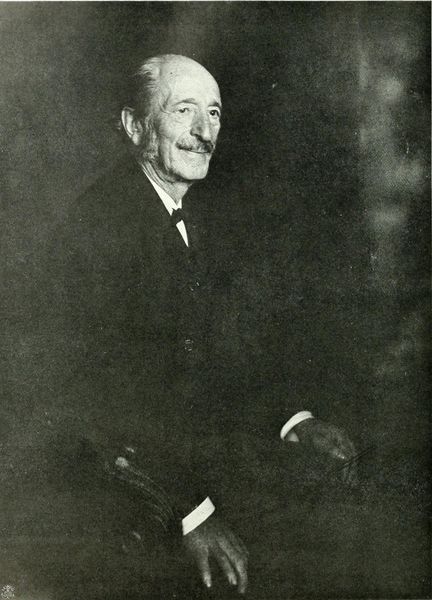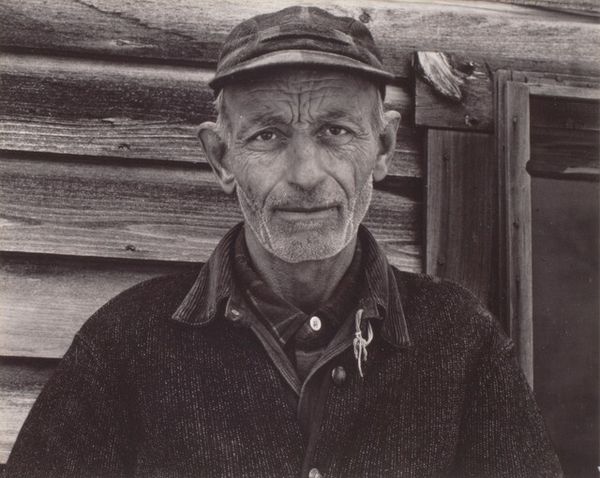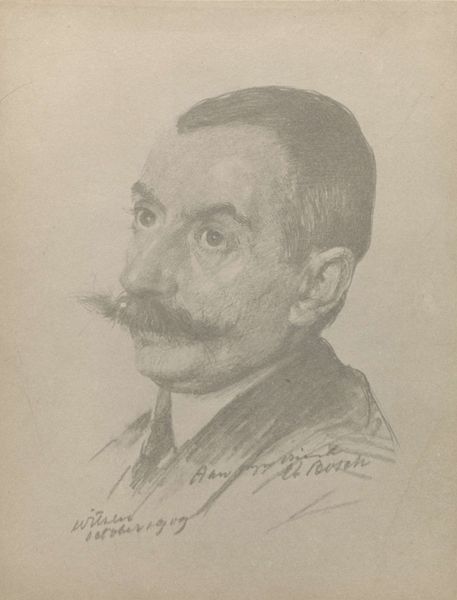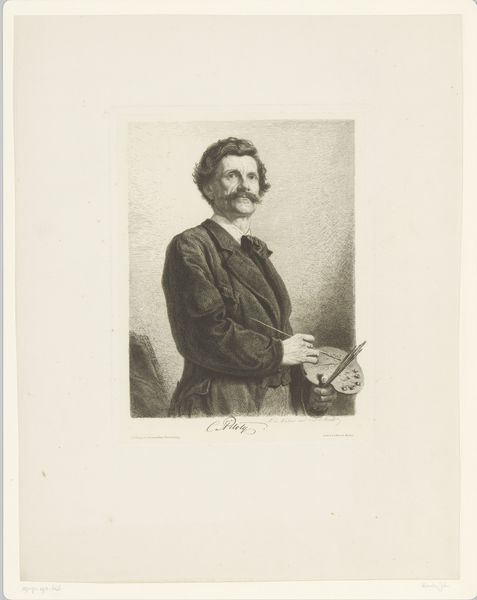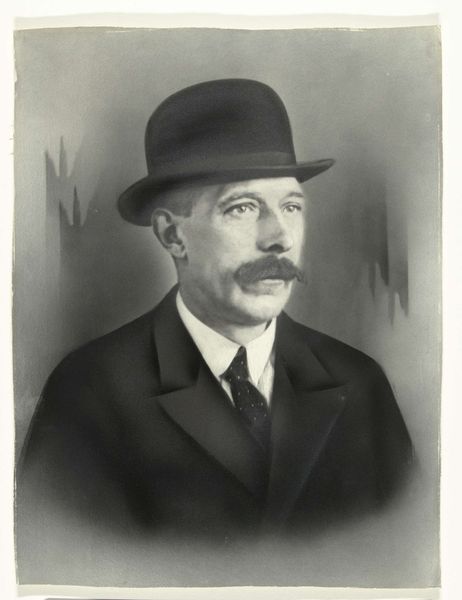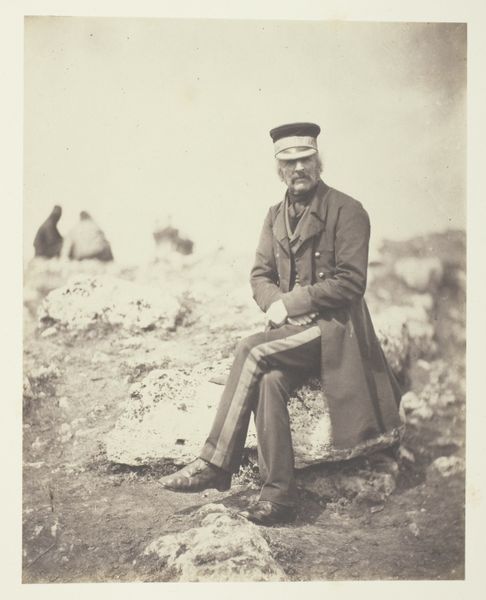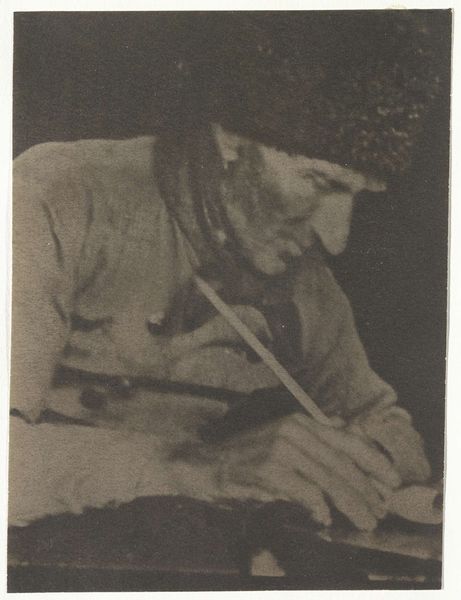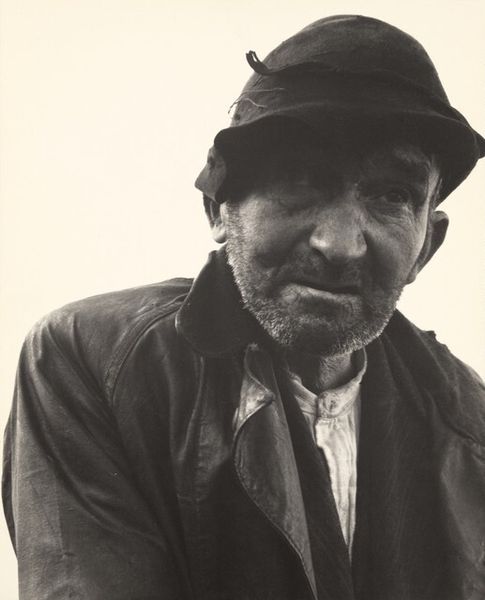
#
low key portrait
#
portrait image
#
portrait
#
portrait subject
#
charcoal drawing
#
male portrait
#
portrait reference
#
portrait head and shoulder
#
yellow element
#
portrait drawing
Dimensions: image/sheet: 22.86 × 17 cm (9 × 6 11/16 in.)
Copyright: National Gallery of Art: CC0 1.0
Curator: It feels like stepping back in time—a sepia-toned memory, isn’t it? The mood is instantly somber, but strong. Editor: Indeed. We're looking at "Arbeiterportrait (Portrait of a Worker)," a photograph by Albert Renger-Patzsch, likely taken around 1930. Renger-Patzsch was a key figure in New Objectivity, so what we see here is very deliberate. The low key of the portrait, as well as the somber but also determined feeling fits very well in this new style. Curator: Deliberate is the word! The composition, the tight focus…it’s like he’s peeling back layers, isn’t it? Showing us something almost brutally honest about the human condition through the eyes of this worker. There's almost something of a medieval peasant feeling when I'm looking at it. Editor: The formal elements reinforce that. Consider the restricted palette, the sharp focus rendering every line and crease visible. The light falls to create this strong feeling and enhances our attention to his aged look. He holds a tool of some sort—its hard to be fully defined on the image. This also adds meaning to the overall image and to his pose, that could seem awkward to our eyes if isolated from context. It gives that impression, doesn’t it, of unvarnished truth? Curator: Truth, and maybe also resilience. I mean, look at his eyes. They’ve seen things, haven’t they? But there’s a certain dignity, a stubborn refusal to be defeated that radiates from him that brings hope. What’s your take, though? Coldly objective still, or do you feel that glimmer? Editor: As formalist I admire it aesthetically of course, but also for its sharp clarity of details. Renger-Patzsch stripped away any romanticism. Every element—the plain clothing, the coarse texture of the skin—works together to signify this individual's role as a worker and his hard experience of it. In this, the beauty arises out of starkness, which is still very present, don't you agree? Curator: Oh, completely. It's almost haunting, in a way. Thank you for drawing those points. Next time I visit it in this space I am going to appreciate those small details. Editor: My pleasure. A rewarding exercise indeed, in the semiotics of portraiture.
Comments
No comments
Be the first to comment and join the conversation on the ultimate creative platform.
